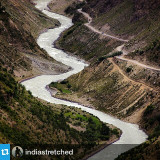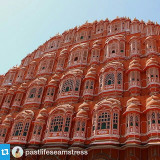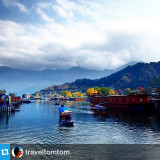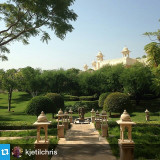Random image from our India photo collection
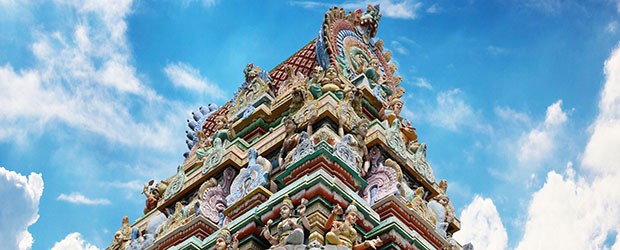
Karnataka
History
Evidence from the pre-historic ages indicated that the culture of Karnataka had much in common with the civilization of Africa and is quite distinct from the pre-historic culture of North India.
Iron weapons dating back to 1200 BC found at Hallur in Dhaward district point out to the earlier inhabitants of the state using iron much before the metal was introduced in the northern parts of the country.
The early rulers of Karnataka were predominantly from North India. Parts of Karnataka were subject to the rule of the Nandas and the Mauryas. It is believed that Chandragupta Maurya came down to Sravanabelgola after renouncing his empire.
Proof of this, are the Ashokan statutes scattered all over the land. After the Kadambas who were the first to lay the foundation of a political empire in Karnataka, came the great Chalukyas of Badami, of whom Pulakesin II was the most illustrious.
The Rashtrakutas who followed were no less a powerful dynasty. Consider the pinnacle of their achievement, the rock-cut Kailasanathar temple of Ellora. Renowned among the Rashtrakuta kings, is Amoghavarsha Nrupatunga of the 9th century, under whose benevolent patronage was published the 'Kavirajamarga' (Royal Road to Poetry).
Nevertheless, it was the Badami Chalukyas whose style of architecture and patronage of the arts really made way for Karnataka to flourish. And descendents to this tradition of patronage were the Hoysalas, whose poetry endures in the temples of Halebid and Belur and in the one perfect jewel at Somnathpura.
It was Mohammed bin Tughlaq who, in 1327, took over Halebid and the impact that his army had on the intricately built temple is evident even today, 600 years later. After this, Mysore was in a swing for a great number of centuries with alternating Hindu and Muslim rulers.
A recognized peak in the Hindu kingships came with the success of the Vijayanagar Empire, which was at its prime in the 1550s. Not much later, though, the Deccan sultans took over Hampi, the capital of Vijayanagar.
The most prolific rulers after the Vijayanagar kings were the father-son duo of Haider Ali and Tipu Sultan in the 18th century. They overthrew the Wodeyar kings of Mysore and established their new capital at Srirangpattnam.
They were the first rulers in India who recognized the importance of scientific warfare and took the services of French to defeat the English. After long fights with the English, Haider Ali was defeated in 1799, but the heroism and progressive culture that he and his father gave is a legacy still maintained by the people.
During the British rule, Karnataka was a part of the Madras Presidency and it became a new state only in 1956. It was named Mysore and some districts from the former Bombay Presidency were added to it. The state was renamed to Karnataka in 1971.
Go back
Iron weapons dating back to 1200 BC found at Hallur in Dhaward district point out to the earlier inhabitants of the state using iron much before the metal was introduced in the northern parts of the country.
The early rulers of Karnataka were predominantly from North India. Parts of Karnataka were subject to the rule of the Nandas and the Mauryas. It is believed that Chandragupta Maurya came down to Sravanabelgola after renouncing his empire.
Proof of this, are the Ashokan statutes scattered all over the land. After the Kadambas who were the first to lay the foundation of a political empire in Karnataka, came the great Chalukyas of Badami, of whom Pulakesin II was the most illustrious.
The Rashtrakutas who followed were no less a powerful dynasty. Consider the pinnacle of their achievement, the rock-cut Kailasanathar temple of Ellora. Renowned among the Rashtrakuta kings, is Amoghavarsha Nrupatunga of the 9th century, under whose benevolent patronage was published the 'Kavirajamarga' (Royal Road to Poetry).
Nevertheless, it was the Badami Chalukyas whose style of architecture and patronage of the arts really made way for Karnataka to flourish. And descendents to this tradition of patronage were the Hoysalas, whose poetry endures in the temples of Halebid and Belur and in the one perfect jewel at Somnathpura.
It was Mohammed bin Tughlaq who, in 1327, took over Halebid and the impact that his army had on the intricately built temple is evident even today, 600 years later. After this, Mysore was in a swing for a great number of centuries with alternating Hindu and Muslim rulers.
A recognized peak in the Hindu kingships came with the success of the Vijayanagar Empire, which was at its prime in the 1550s. Not much later, though, the Deccan sultans took over Hampi, the capital of Vijayanagar.
The most prolific rulers after the Vijayanagar kings were the father-son duo of Haider Ali and Tipu Sultan in the 18th century. They overthrew the Wodeyar kings of Mysore and established their new capital at Srirangpattnam.
They were the first rulers in India who recognized the importance of scientific warfare and took the services of French to defeat the English. After long fights with the English, Haider Ali was defeated in 1799, but the heroism and progressive culture that he and his father gave is a legacy still maintained by the people.
During the British rule, Karnataka was a part of the Madras Presidency and it became a new state only in 1956. It was named Mysore and some districts from the former Bombay Presidency were added to it. The state was renamed to Karnataka in 1971.
Go back


